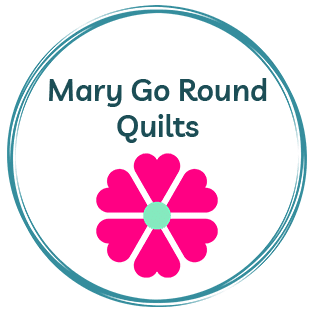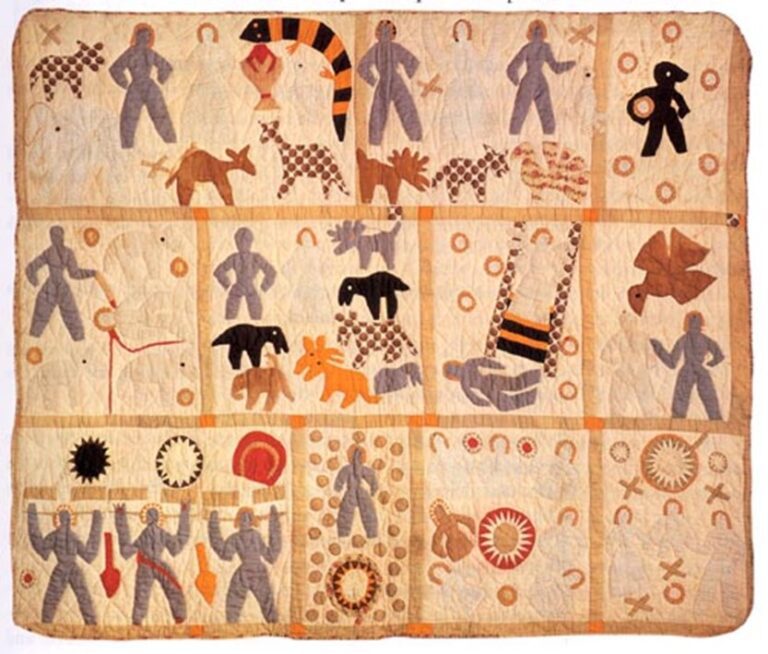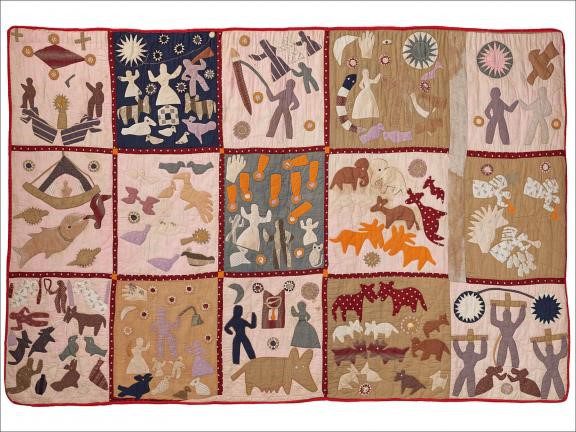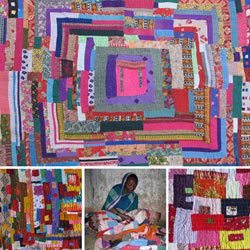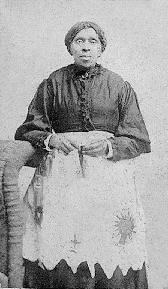
Harriet Powers (1837-1910) was an American folk artist and quilt maker. She was born into slavery in rural Georgia in 1837. At 18, she married Armstead Powers and they had nine children.
Armstead Powers identified himself as a ‘farmhand’ in the 1870 census; Harriet is listed as ‘keeping house’, and three children, Amanda, Leon Joe (Alonzo) and Nancy lived at homeIn the 1880s, after being freed at the end of theAmerican Civil War, they owned four acres of land and had a small farm.
Harriet was a quilter, using traditional appliqué techniques to record local legends, Bible stories, and astronomical events on her quilts.In 1886, Powers began exhibiting her quilts. Her first quilt, known as theBible Quilt, was shown at the Athens CottonFair in 1886. Harriet was approached at the fair by Oneida Virginia “Jennie” Smith, a local artist and teacher, and then head of the art department at the Lucy Cobb Institute.. Jennie offered to purchase the quilt, but Harriett would not sell it at the time.

Oneida Virginia “Jennie” Smith
The two women remained in touch, however, and when Powers met with financial difficulties years later, she agreed to sell the piece for five dollars. Harried asked for $10 but was talked down by Smith to $5.
She gave Ms. Smith an oral description of each of the quilt’s 11 panels. Smith entered Harriet Powers’ Bible Quilt at the 1895 Cotton States and International Exposition in Atlanta. The faculty women atAtlanta Universitycommissioned a second narrative quilt from Harriet Powers to be a gift in 1898 to the Reverend Charles Cuthbert Hall, president of the Union Theological Seminary and longtime chairman of the board of trustees of Atlanta University. The 15 panels of Powers’ second story quilt illustrated Biblical or astronomical events.
Of the quilt, Jennie Smith wrote:
“I have spent my whole life in the South, and am perfectly familiar with thirty patterns of quilts, but I had never seen an original design, and never a living creature portrayed in patchwork, until the year 1886, when there was held in Athens, Georgia, a Cotton Fair, which was on a much larger scale than an ordinary county fair, as there was a ‘Wild West’ show, and Cotton Weddings; and a circus, all at the same time.
There was a large accumulation of farm products… and in one corner there hung a quilt – which captured my eye and after much difficulty I found the owner, a Negro woman, who lives in the country on a little farm whereon she and husband make a respectable living. She is about sixty five years old, of a clear ginger cake color, and is a very clean and interesting woman who loves to talk of her old mistress and life before the war…
Her style is bold and rather on the impressionists order while there is a naievete of expression that is delicious… The scenes on the quilt were biblical and I was fascinated. I offered to buy it, but it was not for sale at any price.”
However, the two women kept in touch. Four years later, at the urging of her husband, Powers offered to sell the quilt, but Ms. Smith’s “financial affairs were at a low ebb and I could not purchase.”
Ms. Smith wrote:
The following year, I sent her word that I would buy it if she still wanted to dispose of it. She arrived one afternoon in front of my door in an ox-cart with the precious burden in her lap encased in a clean flour sack, which was still enveloped in a crocus sack [burlap bag]. She offered it for ten dollars, but I told her I only had five to give. After going out to consult with her husband she returned and said “Owing to the hardness of the times, my old man allows I’d better take it.”
Not being a new woman [an educated and independent woman] she obeyed. After giving me a full description of each scene with great earnestness, she departed but has been back several times to visit the darling offspring of her brain. She was only in measure consoled for its loss when I promised to save her all my scraps.”
Powers explained the imagery of each of the eleven blocks on the quilt; Ms. Smith recorded these descriptions in her personal diary.
The Bible quilt is made up of 11 panels,299 separate pieces of fabric, with broken vertical strips separatingeach panel.
FIRST ROW:
1. Adam and Eve in the garden of Paradise, at the moment when the serpent is about to tempt Eve.2: Eve has given birth to a son.
3. Satan amidst the seven stars.
SECOND ROW:
4. Cain kills his brother Abel, and blood pours from his neck.
5. Cain going into the land of Nod to get a wife.
6. Jacob dreams about the angel on a ladder.
7. The baptism of Christ; the Holy Spirit is present in the brown bird-like object.
THIRD ROW:
8. The crucifixion, with the sun and moon turning into blood.
9. Judas Iscariot and the thirty pieces of silver.
The large star at the bottom refers to a star that was seen in 1886 for the first time in 300 years.
10. The Last Supper, as seen from above. Judas is dressed differently from the others who are all in white.
11. The Holy Family and the Star of Bethlehem.
The Pictoral Quilt (1898)
The scenes depicted in the quilt are as follows:
FIRST ROW:
1. Job praying for his enemies; Job’s crosses; Job’s coffin.
2. The Dark Day of 1780:
An unusual darkening of the day sky was observed over the New England states and parts of Canada on May 19, 1780. The sun diminished to a small spot and then to darkness, which was so complete that candles were required from noon on. The citizens were terrified. The stars could be seen at 12 noon; the cattle went to bed and the chickens to roost. The sun returned the following day. The primary cause of the event was a combination of smoke from Canadian forest fires, thick fog and heavy cloud cover.
3. The serpent lifted up by Moses; women bringing their children to look upon it to be healed.
4. Adam and Eve in the garden; Eve tempted by the serpent; Adam’s rib by which Eve was made; the sun and the moon; God’s all-seeing eye; God’s merciful hand.
5. John baptizing Christ and the spirit of God descending and resting upon his shoulder like a dove.
SECOND ROW:
6. Jonah was cast overboard and swallowed by a whale; turtles.
7. God created two of every kind, male and female.
8. The Night of Falling Stars:
On November 13, 1833 the sky was so bright with shooting stars that a newspaper could be read on the street. One writer says, “For nearly four hours the sky was literally ablaze.” The people were frightened and thought that Judgment Day had come, but the phenomenon was later identified as the famous Leonid meteor shower of 1833.
9. Two of every kind of animal continued… camels, elephants, giraffes, lions…
10. The angels of wrath and the seven vials; the blood of fornications; the seven-headed beast and 10 horns which arose out of the water.
THIRD ROW:
11. Cold Thursday:
This block refers to the unusually heavy snowfall and sub-zero temperatures on February 10, 1895 in Athens, Georgia, a most unusual occurrence. A woman frozen while at prayer; a woman frozen at a gateway; a man with a sack of meal frozen; icicles formed from the breath of a mule, all blue birds killed; a man frozen at his jug of liquor.
12. The red light night of 1846:
A man tolling the bell to notify the people of the wonder; women, children and fowls frightened by God’s merciful hand caused no harm to them.
13. Rich people who were taught nothing of God: Bob Johnson and Kate Bell of Virginia. They told their parents to stop the clock at one and tomorrow it would strike one and so it did. Sent to hell at the tolling of the clock and damned for eternity. The hog named Betts ran 500 miles from Georgia to Virginia.
14. The creation of animals continues.
15. The crucifixion of Christ between the two thieves. The sun went into darkness. Mary and Martha weeping at his feet. The blood and water run from his right side.
During the 1890s, due to financial difficulty, her husband slowly sold off parcels of their land, defaulted on taxes, and eventually left Harriet and their farm in 1895. Powers never remarried and probably supported herself as a seamstress.
Harriet died in 1910 at the age of 73. Only two of her quilts survive today. One is in the National Museum of American History collection at the Smithsonian Institution in Washington, D.C., and the other is in the Museum of Fine Arts, in Boston, Massachusetts.
In January 2005, doctoral student in history at the University of Georgia, Cat Holmes, discovered the grave of Harriet Powers, her husband, and a daughter at Gospel Pilgrim Cemetery in Athens, Georgia.
A few books and a play, “Quilting in the Sun,” honor her memory. Harriet Powers died in 1910, and she was inducted into the Georgia Women of Achievement in 2009.
For more information, please visit the following websites; which were used as reference for this article:
https://aaregistry.org/story/harriet-powers-an-artist-of-story-quilts/
https://www.si.edu/object/1885-1886-harriet-powerss-bible-quilt:nmah_556462
Mary Davis
Mary Go Round Quilts
